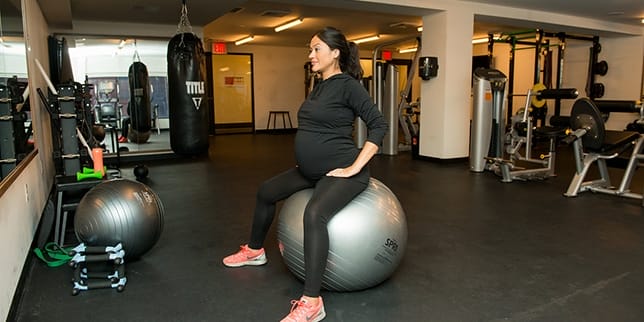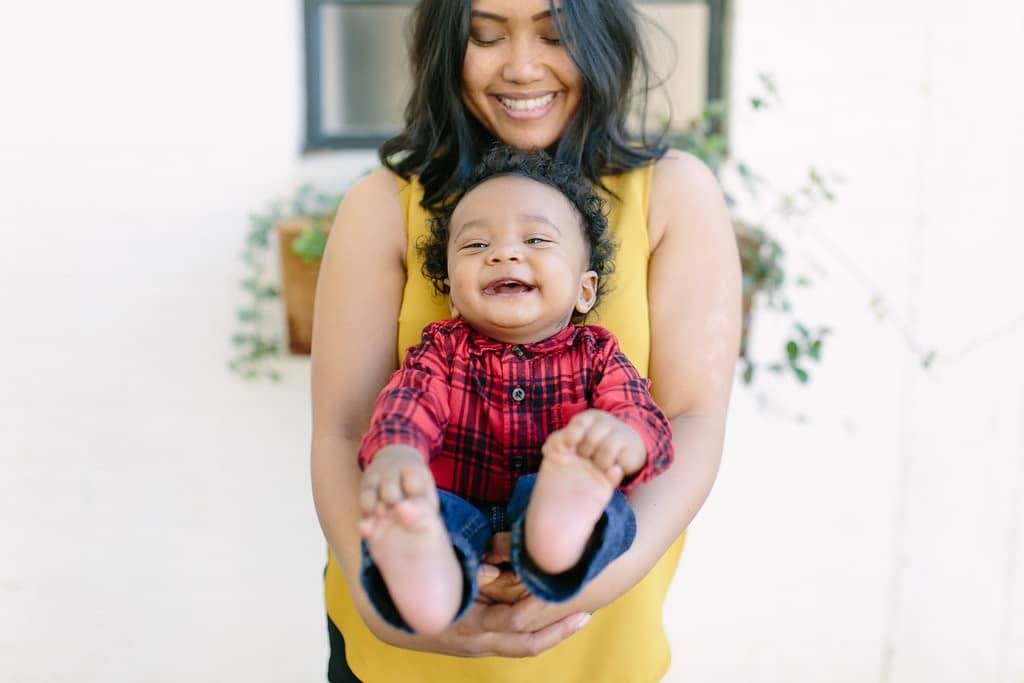What every postpartum mama needs to know about working out

What are the best exercises to start with?
As a Pilates instructor and personal trainer for over a decade, I have worked with dozens of women looking to get back in shape after having a baby. After being cleared for exercise by your medical professional, there is usually limited guidance and information about how to properly rehabilitate your postpartum body. This leaves many women anxious and nervous about what their new body can handle, and how to enter back into an exercise routine.
Here are my top tips to help women understand how and when they should transition back to exercise postpartum:
When can I start exercising?
The American College of Obstetricians and Gynecologists (ACOG) says that for non-complicated vaginal deliveries women can begin exercising within a few days or weeks postpartum. For C-sections or complicated deliveries, it’s usually recommended to wait until your six-week postpartum visit with your medical professional to obtain clearance for exercise.
This is also one of those times when you need to listen to your body. Just because you can exercise doesn’t mean you necessarily need to start right away. Make sure you feel ready to move, and if you experience dizziness, light-headedness, abnormal vaginal bleeding or pain that you cease exercise until you speak with your doctor.
What are the best exercises to start with?
The key to properly rehabilitating your body postpartum is a combination of two things. The first being low impact cardiovascular exercise.
Low impact cardio includes walking, cycling, ellipticals, swimming and light aerobics.
Relaxin, a hormone that loosens the ligaments and joints in your pelvic floor to aid in delivery can stay elevated for months postpartum, raising your injury risk and creating a shift in your balance and posture. If you enter back into high impact exercises, (running, jumping, kickboxing) too quickly, you run this risk of long-term muscle damage and pain.
Many women find they have limited bladder control in the first few months postpartum and this is completely normal! High impact exercise can aggravate this issue, creating an uncomfortable postpartum experience.
The second focus for post-delivery exercise should be pelvic floor and core work that does NOT build abdominal pressure.
Your pelvic floor does not “self-heal” and there are simple exercises you can do to ensure a stronger postpartum body. Recti diastasis (separation of the abdominal muscles) occurs in nearly two-thirds of pregnancies and can linger long after you give birth. If you do too many traditional abdominal exercises like crunches and planks postpartum, you can make recti worse, increasing the likelihood of the “mom pooch,” lower-back and bladder issues.
The best exercises for your core and pelvic floor focus on your transverse abdominals, obliques and lower back. Pelvic tilts, reverse marching, bridges, bird dogs and the dead bug crunch are some of my favorites for entering into a postpartum exercise journey.
You can start with 10 reps of each exercise and build up to one minute.
How long do I need to exercise each day?
I’m a firm believer in all exercise being good for your body, and when you have a baby to take care of, every minute counts! You can start by alternating between 10-15 minutes of low impact cardiovascular exercise to raise your heart rate and burn calories, and 10 minutes of stretching and body weight core work for your body.
Take advantage of the days when you have more time but when you don’t, remember that in just a few minutes a day you can start to rebuild your core, improve your posture, lessen joint and lower back pain and feel stronger.
If you need more motivation to exercise, one study showed pilates based exercises were beneficial for reducing maternal fatigue in the first few months postpartum, something every mom struggles with!
What else can I do to feel “normal” again after delivery?
It will take time for your hormones to regulate, and with irregular sleep habits, you may find yourself feeling off for a while after delivery. In addition to exercise, healthy nutrition and nutrient-dense foods, plus plenty of fluids, are so important. They will provide energy, better sleep, improved muscle repair and weight loss during the first six to 12 months postpartum.
If you’re not yet cleared for exercise or you’re having a day where you just don’t feel like moving, breathing exercises and meditation can help lower your heart rate, blood pressure and reduce symptoms of postpartum anxiety.


































